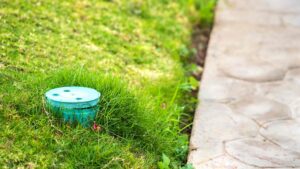
A lush, green lawn is the result of more than just regular watering and mowing—it starts with healthy soil. Understanding the science behind soil health is crucial for cultivating a thriving lawn.
Soil Testing: The First Step to Success
Soil testing is the cornerstone of any successful lawn care regimen. Conducting a soil test helps you understand the pH levels, nutrient composition, and texture of your soil. Armed with this information, you can tailor your lawn care practices to address specific soil needs.
Balancing pH Levels: The Goldilocks Zone
Soil pH plays a crucial role in nutrient availability. Most turfgrass species prefer a slightly acidic to neutral pH range. If your soil is too acidic or alkaline, it can limit nutrient uptake. Adjust the pH through lime application for acidic soils or sulfur for alkaline soils to create the optimal growing conditions for your lawn.
Aeration: Breathing Life Into Your Soil
Compacted soil can suffocate grass roots and impede water and nutrient absorption. Regular aeration is the solution. This process involves perforating the soil with small holes, allowing air, water, and nutrients to penetrate the root zone. Aeration also reduces thatch buildup, promoting a healthier lawn.
Comprehensive Nutrient Management: Feed Your Soil
Different grass types and regions have varying nutrient requirements. Fertilizing your lawn with the right nutrients at the right time is essential. Nitrogen, phosphorus, and potassium are the primary nutrients, but micronutrients like iron and magnesium are equally important. Use slow-release fertilizers for steady nutrient availability and minimal runoff.
Organic Matter: The Lifeblood of Soil
Organic matter improves soil structure, water retention, and nutrient availability. Incorporate organic materials like compost into your soil to enhance its overall health. This not only nourishes your lawn but also supports a diverse ecosystem of beneficial microorganisms.
Proper Watering: Hydration Without Drowning
Overwatering can lead to soil compaction and root rot, while underwatering stresses the grass and hampers growth. Water deeply and infrequently, encouraging deep root growth. Consider installing a smart irrigation system that adjusts watering schedules based on weather conditions and soil moisture levels.
By understanding the science behind soil health and implementing these essential tips, you can cultivate an environment where your grass flourishes. From proper nutrient management to aeration and organic matter incorporation, each step contributes to the overall vitality of your soil and, consequently, a lawn that’s the envy of the neighborhood.
Contact Lawn & Leaf Solutions at 731-225-9907 today or visit us online for more information!

Leave a Reply